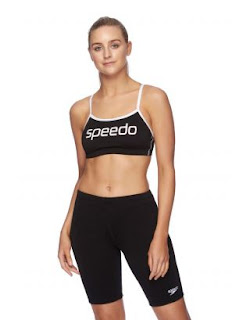The Most Pervasive Problems in Triathlon Wetsuits
Triathlon wetsuits are a pivotal part of equipment because they give the triathletes the buoyancy, insulation, and ability to swim faster. Nevertheless, despite the many advantages of triathlon wetsuits, several problems may impair an athlete's performance or comfort. This article will examine some of the most common issues with triathlon wetsuits and discuss the solutions.
Buoyancy issues
A triathlon wetsuit's ability to provide buoyancy is one of its most crucial features because it can help athletes maintain a better body position in the water, feel less tired, and swim faster. However, some triathlon wetsuits may be excessively buoyant, causing the athlete to float inordinately high in the water, which makes it more challenging to maintain a good body position and swim efficiently. It can be especially problematic in triathlons with long swim distances, where the competitor must maintain proper form for an extended period.
Solution:
Selecting a wetsuit specifically for triathlons with a good balance of buoyancy and flexibility is vital to overcoming buoyancy issues. To determine their ideal buoyancy level and make any necessary adjustments, it is also advised that athletes conduct some swim tests while wearing their wetsuits.
Comfort issues
Discomfort is another typical issue with triathlon wetsuits, and it can be brought on by a variety of things, including poor fit, chafing, and overheating. Chafing can result from friction between the wetsuit and the skin or between different parts of the wetsuit, whereas poor fit can be brought on by selecting a wetsuit that is too tight or loose. The wetsuit may retain too much heat, which can lead to overheating and make it uncomfortable to wear for extended periods.
Solution:
Selecting a swimming wetsuit that fits properly and is made of high-quality materials that provide good insulation and lower the risk of chafing and overheating is crucial to overcoming comfort issues. Athletes are advised to use wetsuit lubricants, such as wetsuit conditioners, to lessen friction and make donning and removing the wetsuit easier.
Durability issues
Wetsuits for triathlons are particularly prone to damage in the areas exposed to the water the most, like the arms and legs. For athletes who depend on their wetsuits to perform at their best, this could lead to the wetsuit becoming damaged and losing its effectiveness, which could be a significant problem.
Solution:
Choosing a triathlon wetsuit made of high-quality materials, such as synthetic fibers, that are resistant to damage from wear and tear and exposure to water is important to overcoming durability issues. Athletes should also take good care of their wetsuits by storing them properly when not in use and keeping them away from anything sharp or rough that could harm them.
Conclusion
Triathlon wetsuits are a key piece of gear because they give the athlete buoyancy, insulation, and faster swimming. Although triathlon wetsuits have many advantages, they can also have drawbacks, such as buoyancy, comfort, and durability problems.
Selecting a wetsuit specifically made for triathlons, fits properly, is constructed of high-quality materials, and has been well-maintained is crucial to avoiding these issues. Athletes should ensure that their triathlon wetsuit falls under these points.
Swimwear is the brand that makes it all possible and offers great quality Triathlon wetsuits australia at considerable costs.
Visit for more, https://www.swimwearshack.com.au/




Comments
Post a Comment